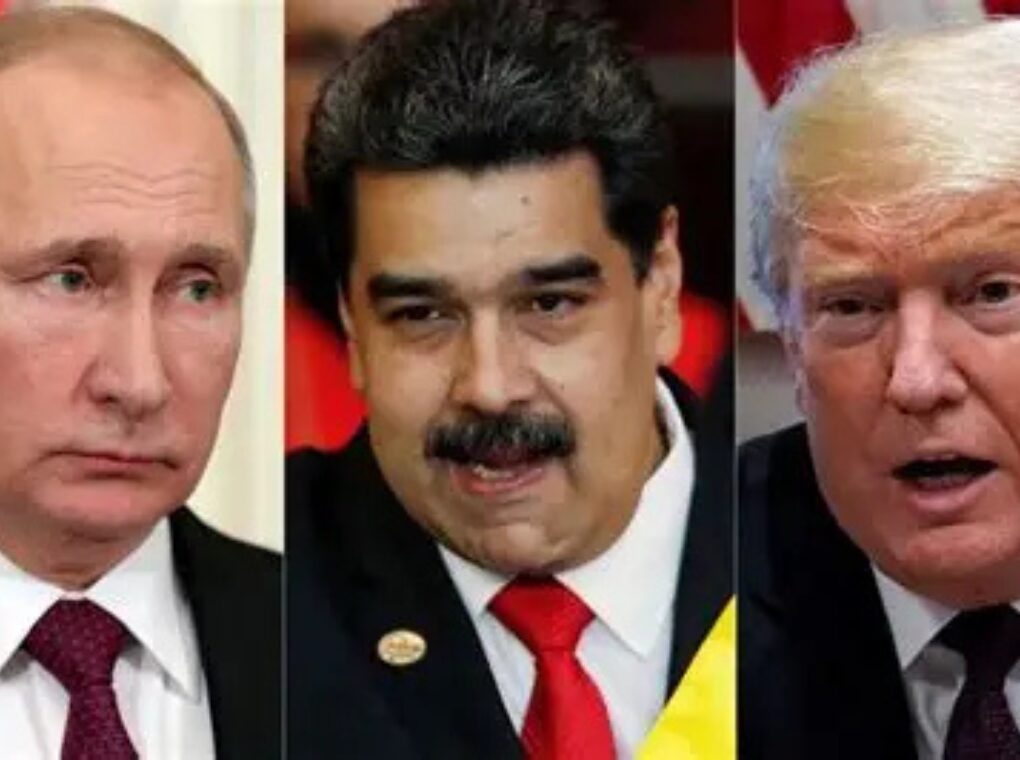In an intense escalation of military readiness in the Caribbean region, Venezuela has deployed Russian-built Buk-M2E air defense missile systems near its capital, Caracas — a move analysts say significantly strengthens the country’s defense posture against possible U.S. military action.
The deployment, confirmed by a video analyzed by the Army Recognition Group, marks a major step in Venezuela’s ongoing effort to fortify its skies amid rising tensions with Washington.
Trump’s Remarks and U.S. Buildup in the Caribbean
While former U.S. President Donald Trump recently played down the chances of a direct U.S.-Venezuela war, his words left room for speculation about regime change. In an interview with CBS’s 60 Minutes, Trump remarked, “I doubt it. I don’t think so. But they’ve been treating us very badly,” when asked if the U.S. might go to war with Venezuela.
Despite his cautious tone, the U.S. military buildup in the Caribbean tells another story. Over the past two months, Washington has positioned warships, bombers, drones, and Marines in what is described as the largest deployment in the region in decades. This heightened military presence, coupled with ongoing intelligence operations from bases in Honduras, Curaçao, and Puerto Rico, has fueled speculation that the Pentagon could be preparing for a potential confrontation or “pressure campaign” against Nicolás Maduro’s government.
Buk-M2E: Caracas’ New Shield
The Buk-M2E (NATO codename: SA-17 Grizzly) is one of Russia’s most advanced medium-range surface-to-air missile systems. Unlike Venezuela’s older S-300VM systems, which are more static, the Buk-M2E offers superior mobility and faster response capabilities — making it ideal for defending urban centers and military command sites around Caracas.
Each Buk-M2E launcher carries 9M317E missiles capable of striking targets up to 45 kilometers away and as high as 25 kilometers. The system can intercept a variety of aerial threats, including fighter jets, drones, cruise missiles, and guided bombs. It is supported by the 9S36 fire-control radar, which can track multiple targets up to 70 kilometers away while maintaining strong resistance against electronic jamming.
Experts note that these features give Venezuela an “A2/AD” (Anti-Access/Area Denial) capability — a strategic shield designed to prevent enemy forces from operating freely in its airspace.
A Layered Radar Network
Venezuela’s deployment also includes the 9S18M1-3 Kupol radar, a sophisticated surveillance system that offers 360-degree coverage and can detect low-flying cruise missiles at altitudes as low as 15 meters. Together with the 9S36 radar, the Kupol system creates a layered defense structure: one radar provides early warning, while the other directs precise engagements.
This combination poses a significant challenge to U.S. air operations. The Buk-M2E can target stealth aircraft such as the F-35 Lightning II and advanced U.S. fighters like the F-15E Strike Eagle and F/A-18E/F Super Hornet. Even Tomahawk cruise missiles — traditionally used in preemptive U.S. strikes — could face interception before reaching Venezuelan targets.
Russia’s Hand in Strengthening Caracas
Moscow’s role in Venezuela’s military modernization cannot be understated. Russia has been a key defense partner to Caracas, supplying advanced systems and providing technical assistance. The Buk-M2E deployment follows a series of joint drills between Russian and Venezuelan forces earlier this year, aimed at improving coordination in the event of foreign airstrikes.
Analysts believe Russia’s assistance is part of a broader effort to maintain influence in Latin America and counterbalance U.S. pressure. The deployment of the Buk-M2E effectively signals to Washington that Caracas is not isolated — it has powerful backers willing to supply advanced military technology.
A Message to Washington
While the Pentagon has not issued an official response as of November 1, 2025, intelligence activity in the region has visibly increased. U.S. reconnaissance missions from Soto Cano Air Base (Honduras), Curaçao, and Puerto Rico have surged since the missile deployment was detected. The U.S. appears to be closely monitoring the situation, aware that any direct military move could now encounter formidable resistance.
For Venezuela, this deployment serves as both a deterrent and a political message. By placing Buk-M2E systems near the capital, Maduro aims to demonstrate that any attack on Caracas would come at a steep cost. The move also boosts national morale at a time when economic hardship and political unrest persist.
The growing militarization of the Caribbean — with U.S. naval power on one side and Venezuelan-Russian air defenses on the other — has reignited fears of a new Cold War-style standoff. While Trump’s comments suggest he prefers to avoid a full-scale conflict, the buildup of forces indicates that Washington is keeping all options open.
If tensions continue to rise, the Buk-M2E’s presence could play a decisive role in shaping U.S. strategy. The system’s mobility, radar sophistication, and ability to engage multiple targets simultaneously make it a potent defensive asset.
For now, both nations appear locked in a dangerous game of deterrence. Whether this standoff remains a show of strength or escalates into open confrontation will depend on diplomatic moves in the coming weeks — and whether either side decides to test the other’s resolve.
